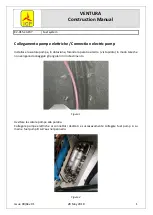
- 25 -
8
Final Remarks
The P80 is at the leading edge of paraglider development and research. The P80
will provide ongoing satisfaction with regards to safety and enjoyment during
flying; provided it is properly cared for and due respect is given to the demands
and dangers of flying.
It must not be forgotten that every aspect of sport flying has inherent dangers
and that the safety ultimately rest with the user.
We strongly recommend that flying is done in a conservative manner. This
includes the selection of flying conditions and safety margins used and applied
during any flying manoeuvres.
Always exercise paragliding with approved and tested equipment and a reserve
chute.
Finally, it should be remembered that flying of a paraglider is at ones own risk
and the safe preparation for flight and the condition of all the equipment is the
responsibility of the pilot.
See you in the sky
Your PARATECH Team
Our Address for further information:
PARATECH AG
Ferhlen 16
CH – 9057 Weissbad
E-Mail:
Web Page:
www.paratech.ch
Phone:
+41 (071) 787 30 31
Fax:
+41 (071) 787 30 32
Summary of Contents for P80
Page 1: ...1 P80 Manual...


































